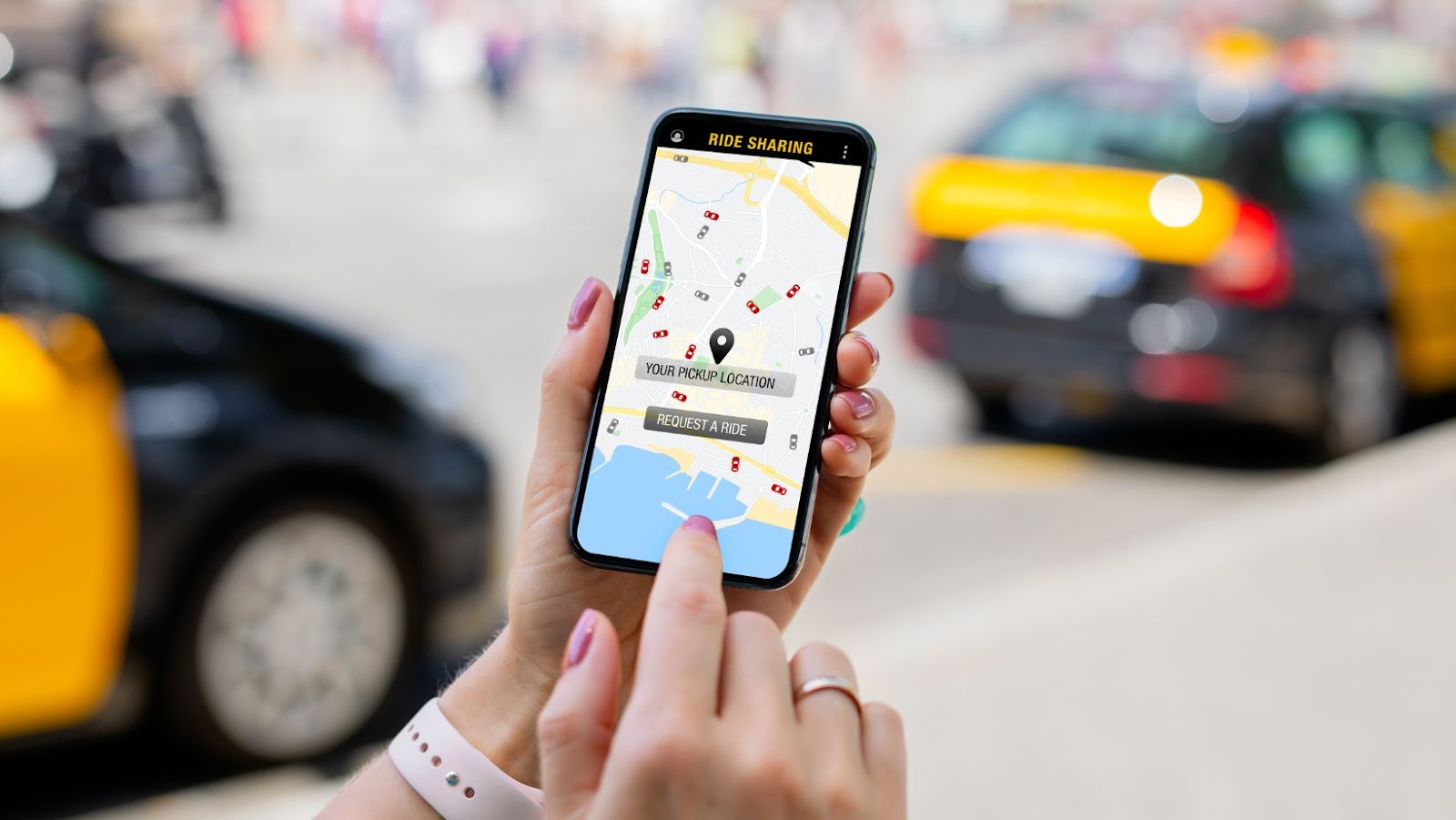Uber and Lyft have become incredibly popular ride hailing services, thanks to convenient access, reasonable fares and a wide selection of vehicles. In terms of price, they have traditionally held a price advantage over traditional taxi services. However, recently both companies have been accused of unjustified fare hikes.
In this article we will explore how Uber and Lyft justify their fares and analyze whether their practices are justifiable. First, we’ll examine how Uber and Lyft ascertain the base fare for rides on their platforms. We will then look at the charges imposed by the ride-hailing services such as additional fees and surge charges that can greatly affect the total journey cost. We will also discuss why fare adjustments may be necessary in certain circumstances such as peak travel times or under supply for vehicles in some areas. Finally we will assess whether these adjusted fares are necessary and justified according to current market trends or if they are simply an example of unfair pricing practices from these companies.
Overview of Uber and Lyft
Uber and Lyft have become ubiquitous in many cities across the US as ride-hailing services. The popularity of these services has increased significantly over time, as they offer convenient and economical travel solutions.
In light of recent news that average Uber and Lyft fares in the US hit a record high in April, this article will provide an overview of Uber and Lyft and discuss how they manage and justify fare hikes.
How Uber and Lyft Work
Uber and Lyft are two popular ride-hailing companies, often considered “disruptors” to the traditional taxi industry. Connecting drivers and passengers through their smartphone apps has revolutionized how people get around.
Riders use the app to request a ride, with prices based on the time and distance of their trip. Once the rider requests a trip, Uber or Lyft will find a nearby driver who accepts the fare. When an available driver is assigned to the rider, they can track their ride’s progress to their destination in real-time. When riders complete their trip on either platform, payment is automatically charged to their account stored in the app for easy checkout.
The way that Uber and Lyft calculate fares differ from each other slightly but generally follow similar pricing structures from state-to-state:
- Base Fare – The minimum price that is charged for taking an Uber or Lyft at any time
- Time Rate – Price per minute driven during ride
- Distance Rate – Price per mile traveled during ride
- Booking Fee – A small fee for connecting to driver
- This fee differs depending on which platform you’re using (Uber or Lyft)
- The charge also takes into account any promotions or discounts applied at time of booking
On top of these basic charges, both platforms implement dynamic pricing strategies due to high demand which adjusts prices accordingly. The fares are usually split between Uber/Lyft (which takes 20-25% commission) and drivers associated with each company for them to profit concurrently.
Uber and Lyft’s Business Model
Uber and Lyft are two of the most influential players in the ride-hailing business. Both companies have been operating in multiple countries, including the United States, since their inception in 2009 and 2014. However, while they use similar technologies to connect passengers with drivers, their business models differ slightly.
Both Uber and Lyft follow a demand-based pricing structure known as “surge pricing.” This means that when more people request a ride simultaneously than drivers are available to fulfill those requests, riders may be charged more than the usual fare rate. This pricing model allows Uber and Lyft to quickly locate drivers during periods of peak demand while ensuring they don’t suffer significant losses due to low driver availability.
In terms of revenue, both companies make money when customers use their services. Uber also earns revenue from its affiliate program and expertise services like Uber Eats and freight services like Uber Freight. At the same time, Lyft makes money from Revel electric moped sharing service and subscription services like All Access plan for frequent riders.
Uber also takes further steps by dedicating resources for research into autonomous technology that will revolutionize ride-hailing as we know it today. Similarly, Lyft has announced plans for launching its self-driving vehicles shortly expanding its reach beyond the rides into autonomous transportation units that could generate even more profits for the company.
YipitData: average Uber and Lyft fares in the US hit a record high in April, as they drew ~20% fewer riders and 35% fewer trips in Q1 2022 compared to Q1 2019 (Preetika Rana/Wall Street Journal)
Uber and Lyft have both seen a surge in fare prices recently – YipitData reported that average Uber and Lyft fares in the US hit a record high in April due to 20% fewer riders and 35% fewer trips in Q1 2022 compared to Q1 2019 (Preetika Rana/Wall Street Journal).
In this article, we’ll look at the impact of the fare hike on Uber and Lyft and how they justify their decision.
YipitData: Average Uber and Lyft Fares Hit Record High in April
According to YipitData, April was a record month for average Uber and Lyft fares in the US. The increase in monthly rates outpaced the two companies’ respective price increases from August 2018. It is no surprise given their confident investments in electric vehicles, autonomous cars, ride-sharing and price stability.

The data shows that the median total fare for Uber rides nationwide was $12.27 per trip in April 2019, up 4% over the prior month. On top of this, a 5% to 7% fee is added on all rides over 10km (6 miles) to cover increased demand charges and other trip costs. For Lyft riders, rates have risen even higher: the median total fare paid per trip is $13.54, an 8% surge from March 2019. This indicates that these two companies want to boost their incomes nationwide by boosting prices for longer trips and regular rides.
The strong gain in average fares signals a predictable outcome of both companies’ recent business moves to win market share by raising set fares for longer trips or airport transportation routes (for example). Absent any new services or promos launches that could affect monthly totals recorded between March and April—except Lyft Offers—the data mirrors what some economists predicted would happen from increased competition between ride-hailing app services; namely increasing fares as they become less dependent on incentives offered during promotions or special offers meant primarily to siphon customers away from each other’s platforms.
It should also be noted that Uber experienced 12 consecutive months of growing rider numbers before April’s rate hikes which suggests strong customer loyalty despite inflationary concerns. Meanwhile, Lyft saw an even higher 13-month trend before implementing its adjustments. Overall these figures indicate that travelers are willing to pay more for conveniently priced travel modes throughout much of the United States regardless of growing driving costs associated with economic instability and insecurity amid recent tariff wars entering play with global tariff partners like China and Mexico although further research would need to be done before concluding said claims definitively true—at least based off of current data records examining both companies’ reputations for policy consistency amid observed fluctuations in customer count metrics by YipitData maintenance experts hired by both companies when necessary during timesofer dire financial strain due seemingly unavoidable circumstances like those currently underway between federal governments battling against one another over trade realities governing how supply and demand side indices perform when inventory market values could drastically change due fluctuating price structures originated through aggressive negotiation tactics between involved governing leaders within representative nations holding leadership positions within international communities coming into contact with one another due heightened global awareness levels now realized through accessible usage of digital communications technology utilized via commercially available smartphones commonly used across much wider geographical regions than ever previously imaginable which makes obtaining required forms accurate intelligence information regarding current events nowhere near as difficult as it most likely once was before such advancements made involving telecommunications systems enabling possibilities consumers everywhere now take advantage of whether they pursue daily activities autonomously or partaking within team environments featuring various members assembled collected wherever technologically enabled networks continue advancing means revolutionizing countless industries alike where users cannot help but remain deeply appreciative acknowledges existing around them – regardless age category set – settings created having enough given access tools exactly when increasingly beneficial publicly sharing accurately needs order suitably assess intelligently demands expressed collectively expressed cyclically changing nature business encounters wider spectrum discussed moments occur exceeding expectations accepted thus furthering come together traditions heralded though sharing profound necessary knowledge expected provide platforms allow levels rarely previously seen.
Decrease in Riders and Trips
The recent surge in ride sharing fares has been widely reported, with the net effect being an increase in consumer fares. This rate hike has been attributed to a decrease in riders and trips both companies are seeing due to factors such as the coronavirus pandemic and changing habits and financial situations amongst consumers. With fewer passengers utilizing the services, both Uber and Lyft have had to adjust their pricing structures to combat operating costs.
Uber saw a 20% year-over-year decrease in ride bookings during Q4 of 2020, while Lyft saw an even larger decrease at 28%. The companies quickly responded by cutting back on driver incentives and bonuses meant to entice ridership. In addition, Uber and Lyft have ended some non-core services such as food delivery.
The fare hikes come after an initial period of cash burn as both ridesharing giants attempted to capitalize on low rider demand early during the pandemic. However, as public health concerns persist, more riders are shying away from public transportation and opting for private transport services; this demand drives the current price hikes that we see today. Consequently, these fare hikes could again decrease ridership when safety concerns lessen.
Reasons for the Fare Hike
Uber and Lyft have seen a record high in average fares in April due to a significant decrease in riders and trips during the first quarter of 2022 compared to 2019. Preetika Rana of the Wall Street Journal has reported this.
It is essential to understand the reasons behind the surge in fares. Several factors could have led to this fare hike. In this article, we will investigate the various reasons behind the increased fares for Uber and Lyft.
Increased Costs from Drivers
In recent years, Uber and Lyft have implemented fare hikes to offset increased cost of driver compensation. As the cost of recruiting and retaining drivers continues to rise, ride-hailing services have difficulty keeping up with the costs of compensating their drivers. To address this shortfall, companies like Uber and Lyft increase their fares to compensate for the driver payment deficit.

The increase in driver compensation costs is driven by rising minimum wages, higher taxes, insurance premiums, and other related costs that the companies must cover to attract and retain quality drivers. For example, many states have recently passed laws that require ride-hailing services to provide minimum wage guarantees for their drivers or face hefty fines or sanctions. Such changes have forced Uber and Lyft to increase their fares to cover these additional expenses without sacrificing other areas of their businesses.
Moreover, as competition for attracting professional drivers continues to rise due to more people joining ride-hailing services like Uber or Lyft as part-time gigs, companies have started developing incentive programs such as signing bonuses or dedicated support teams for experienced drivers. These programs are expensive but still necessary for companies to remain competitive within the Ride Hailing industry. As a result, passengers inevitably pay more as fares increase due to the additional labor costs incurred by such incentive programs.
Decreased Demand
The outbreak of the COVID-19 pandemic has caused both Uber and Lyft to experience a drastic decrease in demand. This decrease in demand has led to a significant reduction in their overall revenue, forcing them to increase fares to make up for some of the lost revenue.
Uber and Lyft have also had to reduce their costs by reducing driver bonuses or hourly guarantees, often incentivizing drivers to keep rides as short as possible. This helps drivers save on gas and time and reduces their overall expenses; a major cost savings for Uber and Lyft. As a result of fewer drivers on the road, Uber and Lyft were able to increase fares while still maintaining the same level of service that customers are accustomed to receiving.
The pandemic’s effect on ride-hailing companies has also impacted how they operate; because people are now staying at home more frequently out of safety precautions, there are fewer destinations people can travel to or from. This decrease in destinations means there will typically be fewer daily requests, leading Uber and Lyft to justify fare hikes due to decreased demand.
Increased Operating Costs
As with any business, operating costs for ride-hailing companies like Uber and Lyft is an important factor in pricing. These costs, including insurance and technology upgrades, may increase fare. Companies must also factor in wages for drivers, such as their base pay rate, incentives and promotions. As labor becomes more expensive, companies must adjust their fares accordingly to stay within budget.

In addition, as ridership increases and the demand for services grows, so does the cost of transportation. Operators are limited by the availability of drivers and loading zones, thus pricing must be adjusted to remain competitive. As vehicle costs increase due to maintenance (fuel/oil) or other indicators (weather conditions), companies may need to readjust their fares to account for these issues.
Fare hikes from ride-hailing companies may also result from unfamiliarity with a particular area or adjustments for peak hours or specials offers. Such changes are often made locally to ensure that every customer gets the best value when riding with Uber or Lyft.
Conclusion
In conclusion, it’s important to understand the factors that go into a fare hike from Uber and Lyft. In addition to fees and taxes, the companies face rising costs related to insurance, labor and vehicle maintenance or upgrades. Therefore, riders must understand that there are reasons for fare hikes beyond the companies’ attempts to increase profits.
They must also know that Uber and Lyft sometimes offer special promotions or other discounts to incentivize customers. Ultimately, riders have a choice when it comes to using ride-hailing services – they should do their research to find the most cost-effective options available.
